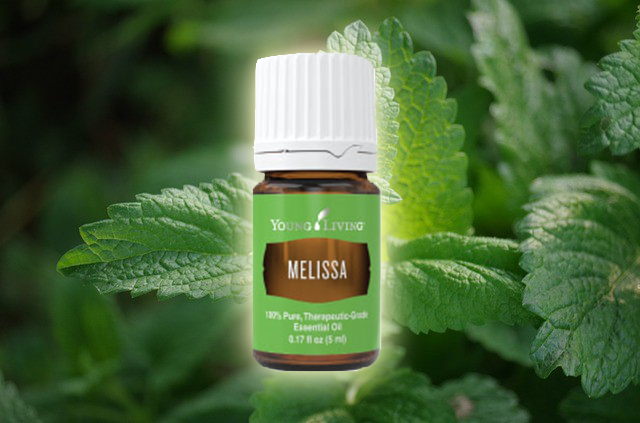The following article is from Dogs Naturally Magazine. We did not write this but we feel the information is very important.
What’s the one thing you can do to make your dog live longer or be healthier?
Would you feed a different food? Would you give your dog more exercised attention? What would you change?
Over the years, I’ve made many lifestyle changes for my dogs. And some of these changes have had a massive impact on their health. So, in the spirit of sharing, I’m going to reveal the top five changes that have had the biggest impact on my dogs’ health.
PS: #5 is, by far, the most important, but read them all …
5 Steps To Improve Your Dog’s Health In One Year
1. Feed A Raw Diet
One of the best ways to immediately improve your dog’s health is to toss that bag of kibble in the trash. Start feeding him a fresh, raw diet. There’s really nothing magical about what’s in the raw diet … what’s important is what’s not in it …
Kibble needs to contain at least 30% starchy carbohydrates to hold it together. Some kibbles contain as much as 60% starch (and kibble manufacturers aren’t required to say how much is in the food).
Why is starch a problem? There are a few important reasons …
Mycotoxins
Starch is a breeding ground for molds, which produce a by-product called mycotoxin. Mycotoxin can contaminate crops before they’re harvested or after your dog’s food is made. The most common sources are corn, barley, wheat, beets, peanuts and cottonseed.
Research shows that the core vaccines your dog gets as a puppy protect him for at least 7 to 15 years.
Mycotoxins are extremely harmful to your dog. One mycotoxin in particular, aflatoxin, is the most potent cancer-causing compound found in nature.
Other Dangers
Carbohydrates are also the preferred fuel for the harmful bacteria that live in your dog’s gut. And worse, cancer cells. Many are genetically modified. They’re sprayed with pesticides (which also harm your dog’s gut bacteria). And, most importantly, your dog has no nutritional need for carbohydrates!
2. Replace Fish Oils With Healthier Oils
Fats are a very important part of your dog’s diet. Fats play several different roles, including: …
- providing energy
- forming the membranes of all the body’s cells
- helping the body absorb fat soluble vitamins
- controlling important hormones
A good way to make sure your dog is getting enough fat (and enough of the right types of fat) in his diet is with oils.
This may have you reaching for the fish oil, but fish oils are a bad idea. I know, this seems radical to you, but here’s why .…
Fish Oils Can Cause Disease And Inflammation
Fish oils are heated and processed foods. And that heating and processing damages the fats and causes oxidation or rancidity. Even oxygen can cause oxidation. Even if you buy a really high-quality fish oil, every time you open the bottle, it becomes more and more rancid.
Oxidized fats break down and create oxygen-containing molecules called free radicals. Both MDA and free radicals cause premature aging and disease. This is because they damage proteins, DNA and other important cellular structures.
This damage is called oxidative stress. It leads to health problems, including gene mutations and cancer, and inflammatory conditions.
Fish Oil Contains Toxins
Although fish oils are loaded with healthy fats, fat is where fish and other animals store toxins. Unfortunately, the oceans are becoming more and more polluted by the minute. Heavy metals like arsenic, lead and mercury end up in fish oil. These toxins can cause nervous system disorders, cancers, liver and kidney damage and skin problems.
And don’t think your dog’s fish oil is safe. Independent lab analysis found that even tested fish oils still contained dangerous PCBs.
Fish Oil Kills The Ocean
Menhaden fish is one of the most sought-after fish for omega-3 fats – and it’s commonly used for pet foods. Menhaden fish are important because they eat algae blooms. This keeps the ocean waters clean and full of oxygen.
But it’s estimated that fishermen take half a billion menhaden from our oceans every year. Now the oceans are developing dead zones – areas with a lack of oxygen. The fertilizers used to make our foods run off into the oceans and create these algae blooms. And without the menhaden fish, these algae blooms are killing our oceans.
Switch to phytoplankton. Phytoplankton is also an excellent source of Omega-3 essential fatty acids. It also has important trace minerals, antioxidants and other nutrients. Phytoplankton is absorbed by the body as soon as it gets in your dog’s mouth. This means it delivers key nutrients without your dog having to digest it first. Learn more about feeding phytoplankton, including what to buy and how much to give.
Sardines (fresh or canned) are also a good option.
PHYTOPLANKTON
Phyto Synergy is complete nutrition in a small package. Rich in omega-3 fats and minerals, phytoplankton is a healthy alternative to fish oils.
3. Feed The Gut (Not The Dog)
Bacteria that live in your dog’s gut form 80% of his immune system. These friendly bacteria produce your dog’s vitamins, help him digest food and more.
But these friendly bugs can easily be damaged by some foods. For example, starchy carbs feed the enemies and crowd out the friendlies. Antibiotics, poor diet, radiation and even aging can also affect the gut bacteria. You need to help your dog’s gut replace the friendly bacteria. Here’s how …
Feed Probiotics
You can boost the number of good bacteria in your dog’s gut by adding a probiotic supplement to your dog’s diet. You can also give probiotic foods such as fermented vegetables, raw goat milk or kefir.
If you buy a probiotic supplement for dogs, follow the dosing directions. If you buy one for humans, assume the directions are for a 150 lb human and adjust for your dog’s weight.
You can also add these probiotic foods to your dog’s regular food or give as a snack.
Fermented vegetables:
- Up to 15 pounds – 1 tsp a day
- 16 – 30 pounds – 2 tsp a day
- 30 – 60 pounds – 3 tsp a day
- Every additional 30 pounds, add 1 tsp
Raw goat milk – 2 oz per day for every 20 lbs of body weight.
Kefir – give ¼ cup per 25 lbs daily.
Fish oils are heated and processed foods. And that heating and processing damages the fats and causes oxidation or rancidity.
One thing to remember with probiotics is that you need to introduce them slowly. If your dog is new to probiotics, they can cause a die-off of the harmful bacteria. This can cause gas, loose stools and stomach rumblings. So just go a bit slow if your dog has a history of digestive upset.
Probiotics need food too, and that’s the role of prebiotics. They support the healthy probiotic bacteria.
It’s easy to add these too. Bananas are good in moderation (they contain a lot of sugar). Green leafy vegetables and apples are also great sources of prebiotics. And you don’t even have to worry about how much you give.
Garlic is also great, in moderation. Fresh organic garlic is best. Give up to 1 tsp for every 30 lbs of your dog’s weight per day.
4. Replace Dewormers With Herbs
For most dog owners, tapeworms, whipworms or other parasites can mean a trip to the vet. It’s great that you care about your dog, but …
Conventional chemical dewormers contain really harmful ingredients that can have dangerous side effects. Here are some of the most common:
- Fenbendazole – can cause vomiting, lethargy, weight loss, diarrhea, inflammation, even death
- Pyrantel – can cause vomiting, weight loss, depression, even death
- Praziquantel – can cause lethargy, vomiting, diarrhea, depression, even death
Most of the common dewormers contain these ingredients along with other nasty drugs. This makes them even riskier. So skip the chemicals and opt for herbs.
Herbs For Worms
- Diatomaceous Earth (DE). DE can reduce the number of worms in your dog. Just make sure it’s food grade DE, never pool grade. Feed small dogs a teaspoon per day and dogs over 55 pounds up to a tablespoon per day. Make sure it’s well mixed in his food as inhaling DE can irritate your dog’s lungs.
- Oregon Grape. Oregon grape is an anti-parasitic, so it’s a perfect natural dewormer. Give it as a tincture, using 12 drops per 20 pounds. Don’t give this herb to dogs with liver disease or to pregnant dogs.
- Chamomile. Chamomile is great for preventing and getting rid of roundworms and whipworms. In glycerin tincture form, give 0.25 ml to 50 ml per 20 lbs of body weight twice daily.
For more stubborn cases, try:
- Black Walnut. Black walnut is a very effective natural dewormer. But it can be harsh on your dog’s system, so try the more gentle solutions first. The strong ingredients in black walnut can cause vomiting, diarrhea and gastritis. It’s best to use it in consultation with a holistic vet.
- Wormwood. Wormwood is similar to black walnut. It should only be used when other options fail. Don’t give it to dogs who suffer from seizures, kidney problems or liver disease or dogs who are pregnant or lactating. Also like black walnut, it’s best to use it only after consulting with your holistic veterinarian.
Foods For Deworming
Along with herbs, there are several different foods that you can give your dog to both prevent and get rid of worms. Remember that a healthy gut is unattractive to worms, so a raw food diet is a really good start in preventing worms.
- Fermented vegetables. Sauerkraut, kimchi or carrots are good choices. Work up to 1 to 3 tsp per day per 20 lbs of body weight with his food.
- Pumpkin seeds. These are one of the safest and most effective ways to treat worms. Just grind up the seeds and give ¼ tsp per 10 lbs of your dog’s weight in his food.
- Pineapple and papaya. Both are full of enzymes that help fight worms. Give 1 tsp per 10 lbs of your dog’s body weight per day as a snack or with his food.
- Grated carrots, watercress, fennel, cucumber. All are great ways to help your dog fight worms. Add 1 tsp per 10 lbs of body weight per day to your dog’s food.
5. Avoid All Unnecessary Vaccines
Here’s an important tip … most vaccines your dog gets are unnecessary!
Over-vaccination costs you more than just money … it can seriously harm your dog. Vaccine reactions are more common than you think and they’re well documented. Reactions can range from minor (lethargy) to moderate (chronic allergies), to severe (death).
And there’s actually no need to put your dog’s health at risk …
Mycotoxins are extremely harmful to your dog. One mycotoxin in particular, aflatoxin, is the most potent cancer-causing compound found in nature.
Research shows that the core vaccines your dog gets as a puppy protect him for at least 7 to 15 years. That means he’s covered for most, or probably all, of his life after his puppy vaccination. It also means that anything more than those first puppy shots is over-vaccination.
Even though your vet wants you to vaccinate every 1-3 years, there’s no research showing it’s necessary. Nearly every dog who’s vaccinated at or after 16 weeks of age is good for life. So the next time your vet tells you it’s time for your dog’s regular vaccination, ask her for the research. Or, better yet …
Dr Schultz’ original research on the duration of immunity is available online. Read it here.
If you’re worried about skipping this year, you can check to see if he’s protected beforevaccinating. Ask your vet for a titer. A titer is a blood test that measures the level of protective antibodies your dog has.
AAHA (American Animal Hospital Association) vaccine guidelines say a positive titer can replace vaccination for the core vaccines. So if your vet presses you to vaccinate, you can refer her to these guidelines. Don’t just give in and vaccinate, your dog’s life might rely on that decision!
So, what about non-core vaccines like bordetella, lyme or leptospirosis?
Well, they’re unnecessary too. What’s worse, they often don’t work and carry some of the most dangerous side effects.
Even rabies, which is required by law, is only required every three years in all US states and most Canadian provinces.
So, before you make an appointment for your dog’s vaccines, think about how they might affect his health. Remember, nobody can force you to vaccinate your dog. Stick to your guns and don’t let your vet guilt you into changing your mind. You’ve made your decision for a very good reason.
Get your dog’s health back on track with these five simple changes. They’ll seriously improve his health and reduce his risk of disease. They did for my dogs. ?






